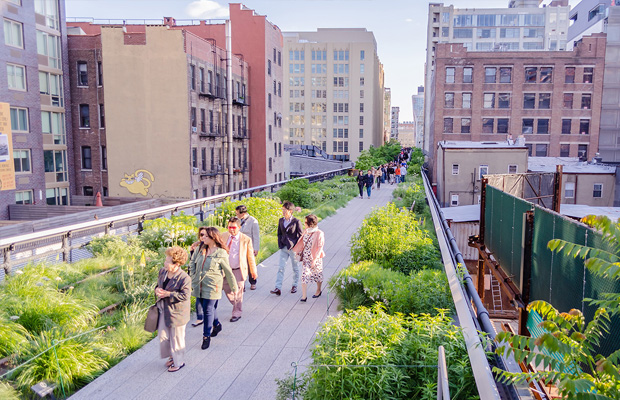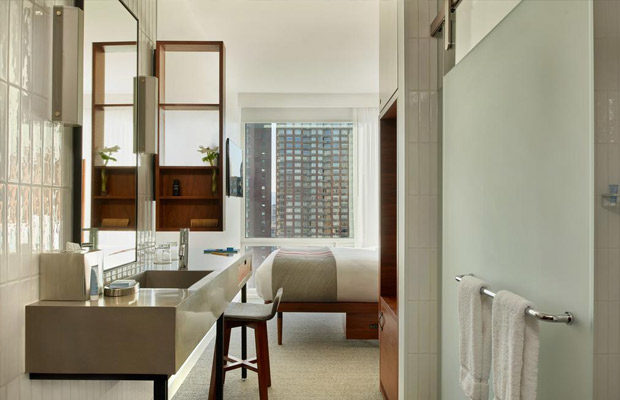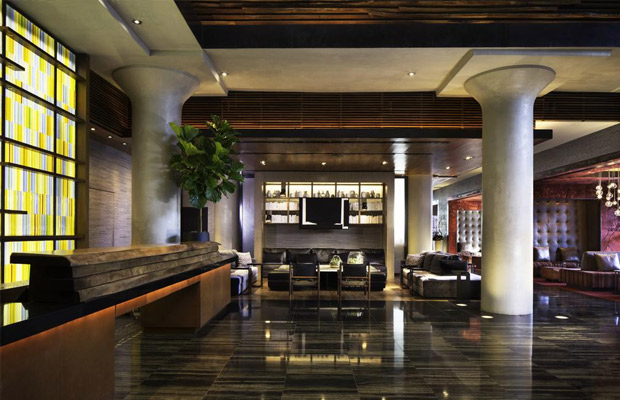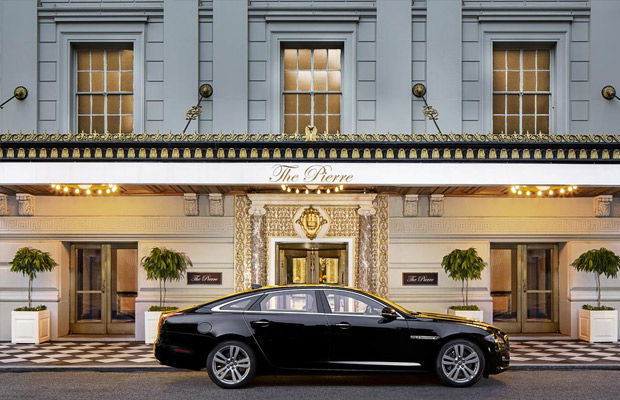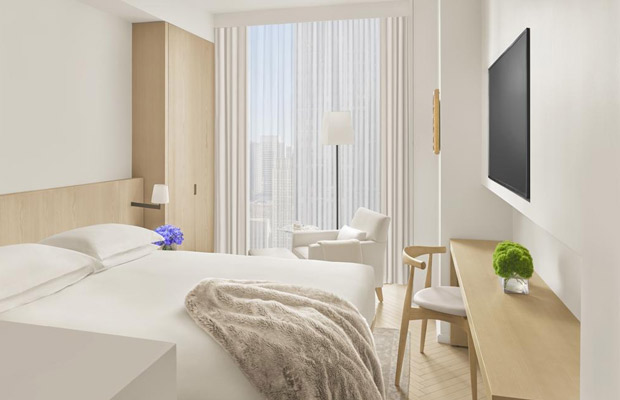Brooklyn Bridge
Brooklyn Bridge
USA
New York
New York Travel Guide
Book Tour & Activities
Your tour in New York.
Book your stay
Your hotel in New York.
Overview
The Brooklyn Bridge is a hybrid cable-stayed/suspension bridge in New York City, spanning the East River between the boroughs of Manhattan and Brooklyn. Opened on May 24, 1883, the Brooklyn Bridge was the first fixed crossing across the East River. It was also the longest suspension bridge in the world at the time of its opening, with a main span of 1,595.5 feet and a deck 127 ft above mean high water.
The span was originally called the New York and Brooklyn Bridge or the East River Bridge but was officially renamed the Brooklyn Bridge in 1915. Proposals for a bridge connecting Manhattan and Brooklyn were first made in the early 19th century, which eventually led to the construction of the current span, designed by John A. Roebling. The project's chief engineer, his son Washington Roebling, contributed further design work, assisted by the latter's wife, Emily Warren Roebling. Construction started in 1870, with the Tammany Hall-controlled New York Bridge Company overseeing construction, although numerous controversies and the novelty of the design prolonged the project over thirteen years.
Description
The Brooklyn Bridge, the world's first major steel-wire suspension bridge, uses a hybrid cable-stayed/suspension bridge design, with both horizontal and diagonal suspender cables. Its stone towers are neo-Gothic, with characteristic pointed arches. The New York City Department of Transportation (NYCDOT), which maintains the bridge, says that its original paint scheme was "Brooklyn Bridge Tan" and "Silver", although a writer for The New York Post states that it was originally entirely "Rawlins Red".
Deck
To provide sufficient clearance for shipping in the East River, the Brooklyn Bridge incorporates long approach viaducts on either end to raise it from low ground on both shores Including approaches, the Brooklyn Bridge is a total of 6,016 feet (1,834 m) long when measured between the curbs at Park Row in Manhattan and Sands Street in Brooklyn.[4] A separate measurement of 5,989 feet (1,825 m) is sometimes given; this is the distance from the curb at Centre Street in Manhattan.
Suspension span
The main span between the two suspension towers is 1,595.5 feet (486.3 m) long and 85 feet (26 m) wide.[5][6][8] The bridge "elongates and contracts between the extremes of temperature from 14 to 16 inches".[17] Navigational clearance is 127 ft (38.7 m) above mean high water (MHW).[9] A 1909 Engineering Magazine article said that, at the center of the span, the height above MHW could fluctuate by more than 9 feet (2.7 m) due to temperature and traffic loads, while more rigid spans had a lower maximum deflection.
The side spans, between each suspension tower and each side's suspension anchorages, are 930 feet (280 m) long.[5][6] At the time of construction, engineers had not yet discovered the aerodynamics of bridge construction, and bridge designs were not tested in wind tunnels. It was coincidental that the open truss structure supporting the deck is, by its nature, subject to fewer aerodynamic problems. This is because John Roebling designed the Brooklyn Bridge's truss system to be six to eight times as strong as he thought it needed to be.[19][20] However, due to a supplier's fraudulent substitution of inferior-quality cable in the initial construction, the bridge was reappraised at the time as being only four times as strong as necessary.
The main span and side spans are supported by a structure containing six trusses running parallel to the roadway,[22] each of which is 33 feet (10 m) deep.[23][24] The trusses allow the Brooklyn Bridge to hold a total load of 18,700 short tons (16,700 long tons), a design consideration from when it originally carried heavier elevated trains.[7][25] These trusses are held up by suspender ropes, which hang downward from each of the four main cables. Crossbeams run between the trusses at the top, and diagonal and vertical stiffening beams run on the outside and inside of each roadway.
An elevated pedestrian and cycling promenade runs in between the two roadways and 18 feet (5.5 m) above them.[26] It typically runs 4 feet (1.2 m) below the level of the crossbeams,[27] except at the areas surrounding each tower. Here, the promenade rises to just above the level of the crossbeams, connecting to a balcony that slightly overhangs the two roadways.[28] The path is generally 10 to 17 feet (3.0 to 5.2 m) wide.
Approaches
Each of the side spans is reached by an approach ramp. The 971-foot (296 m) approach ramp from the Brooklyn side is shorter than the 1,567-foot (478 m) approach ramp from the Manhattan side.[6] The approaches are supported by Renaissance-style arches made of masonry; the arch openings themselves were filled with brick walls, with small windows within. The approach ramp contains nine arch or iron-girder bridges across side streets in Manhattan and Brooklyn.
The Brooklyn Banks, a skate park composed of brick obstacles under a series of steel viaducts
Brooklyn Banks skate park, seen in 2009
Underneath the Manhattan approach, a series of brick slopes or "banks" was developed into a skate park, the Brooklyn Banks, in the late 1980s. The park uses the approach's support pillars as obstacles. In the mid-2010s, the Brooklyn Banks were closed to the public because the area was being used as a storage site during the bridge's renovation. The skateboarding community has attempted to save the banks on multiple occasions; after the city destroyed the smaller banks in the 2000s, the city government agreed to keep the larger banks for skateboarding. When the NYCDOT removed the bricks from the banks in 2020, skateboarders started an online petition.
Video Travel Inspiration
See Brooklyn Bridge on Map
Most Popular Cities

Siem Reap
Cambodia
Ho Chi Minh City
Vietnam
Beijing
China
Paris
France
London
United Kingdom
New York
USA
Tokyo
Japan
Bangkok
Thailand
Seoul
South Korea
Vientiane
Laos
Yangon
Myanmar
Washington DC
USA
Los Angeles
USA
Ottawa
Canada
New Delhi
India
Singapore
Singapore
Kuala Lumpur
Malaysia
 English
English French
French Khmer
Khmer Thai
Thai Vietnamese
Vietnamese Chinese
Chinese Korean
Korean German
German Japanese
Japanese Italian
Italian Russian
Russian Spanish
Spanish Dutch
Dutch Indonesian
Indonesian Malay
Malay






